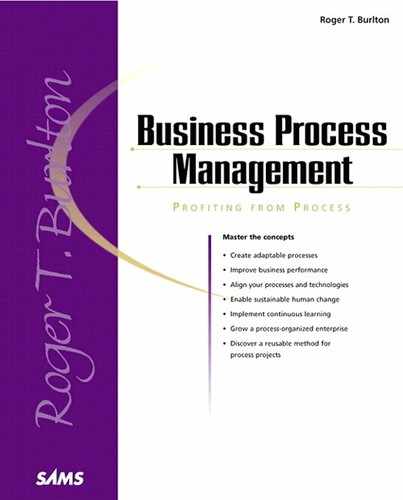Developing Communication and Human Change Strategy
This often-overlooked step determines the message to be sent to staff and other key stakeholders, and the media to be used to start the change management process and to create “agents of change.” At this step, an organization delivers its initial message regarding change and handles initial feedback.
Techniques
Developing communication and human change strategies calls for stakeholder-based techniques such as the following, which focus on anticipated concerns:
Lessons Learned
Develop and document a starting set of “principles to live by” regarding the new process and new way of running the business. Publicize this and live it. Components should include
Core business principles and values
Customer-focused design principles
Project conduct principles
Staff impact principles
Management conduct principles
Determine commitments that will be made to the staff regarding how they will be treated as a result of changes. Identify the types of information that will be shared, how often it will be communicated, and the media and messengers for the chosen communications plan. Resolve what will be communicated to the staff and the opportunities they will have to participate in the process of making change happen. No matter what the answers are, inform the staff openly and honestly about what this change will mean to them and to the organization, so that they won’t feel as though you are hiding something.
Anticipate all possible questions and objections that could come from all possible sources and build answers to them in advance. Anticipate the negatives and present them before you are asked, if possible. Make sure that all those who might be asked about the initiative and its impact know the possible questions and are prepared to answer them confidently. The responses must be credible and consistent. This won’t be the case if you aren’t prepared.
Commitment regarding the outcomes of the project must be made in this step. This includes what the project is attempting to do, the impact it will have on the workforce and jobs, how the project will be run, the benefits to the business, and so on. Always start messages to the staff with what a change means to them before extolling the virtues of the benefits to other stakeholders. They won’t hear your message if their own concerns aren’t addressed first.
Understand sales and public relations techniques such as objection management to help manage the messages and make sure that there will be time to execute the program of communication on an ongoing basis. This is real work—not something to be done in spare time. (There will be no spare time.)
Identify a person who’s clearly responsible for following up and conducting the communications and change management plan.
The CEO should deliver the initial message. Commitments must be made to an ongoing communications program for the project’s duration. Be prepared to repeat the message—it seldom sinks in on one go.
Be honest, no matter how painful it might be. You will pay later if you aren’t.
